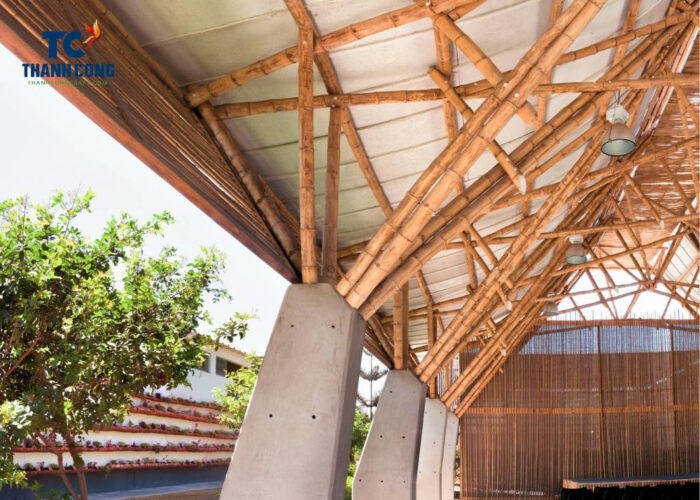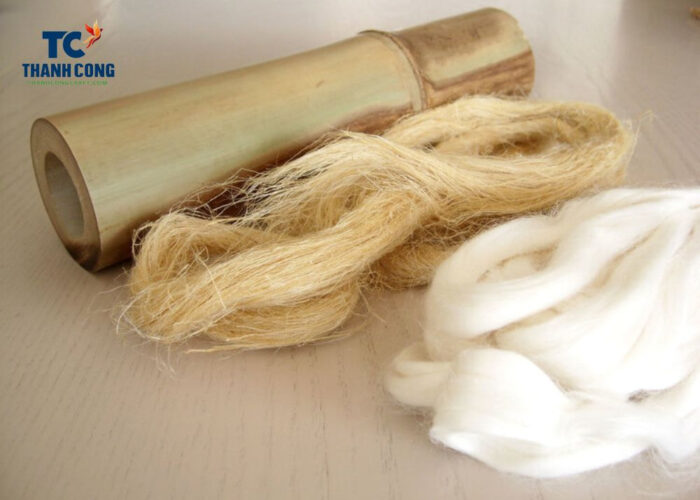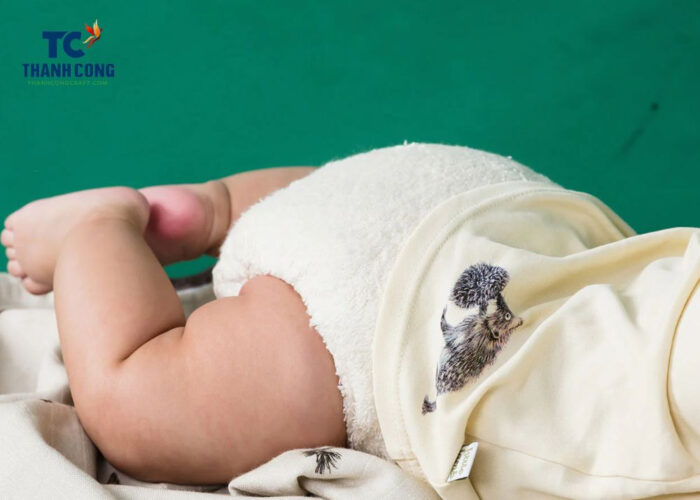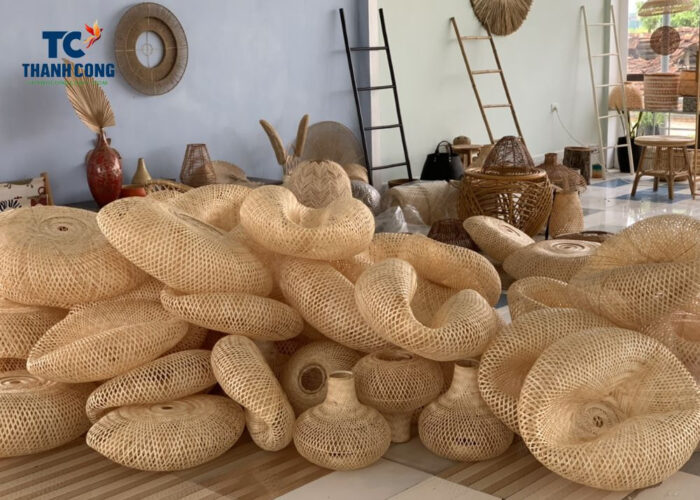Kết quả 1 đến 1 của 1
-
08-25-2023, 05:03 PM #1
 Silver member
Silver member
- Ngày tham gia
- Jul 2023
- Bài viết
- 176
20 Uses Of Bamboo That You Didn’t Know Part 1
Bamboo shines as a symbol of sustainability and eco-awareness, offering a remedy to the escalating concerns about the depletion of our planet’s natural resources. Its importance becomes evident in bamboo’s exceptional ability to serve as a pragmatic alternative to traditional wood. Let’s now delve into the realm of 20 Uses Of Bamboo That You Didn’t Know and uncover its hidden versatility.
1. Bamboo is used to make many dishes
Indeed, bamboo plays a crucial role in diverse culinary traditions around the world. Its young shoots, for example, are a delicacy in many Asian cuisines. These tender shoots are not only nutritious but also add a distinct flavor and texture to dishes.
Bamboo is also utilized as a container for cooking or serving food. Bamboo steamers are a staple in Asian cooking, allowing gentle cooking that retains flavors and nutrients. Moreover, bamboo leaves are often used to wrap and cook foods, infusing them with a subtle earthy aroma.
2. Bamboo is used to Medicines
Various parts of the bamboo plant, including its leaves, stems, and roots, are utilized in different medicinal formulations. Bamboo extracts are believed to possess properties that aid in treating conditions such as inflammation, fever, and infections. Additionally, bamboo-based products are incorporated into supplements and herbal remedies, demonstrating the plant’s potential in the realm of healthcare and wellness.
3. In the realm of construction
Bamboo stands as a testament to the ingenuity of early builders, predating the use of concrete and steel. With its robust trunk and flexible nature, bamboo has been employed in crafting enduring houses that have stood the test of time.

Bamboo stands as a testament to the ingenuity of early builders
The split bamboo shingles, when intricately arranged, yield walls of both remarkable strength and visual appeal. Even today, bamboo maintains its popularity as a construction material, serving diverse purposes. It reinforces foundations and remains a preferred choice for structural support. Furthermore, in the context of irrigation projects, bamboo is instrumental in fortifying dikes, dams, and other essential infrastructure, showcasing its lasting relevance in engineering endeavors.
4. Bamboo is utilized in the creation of mats
Bamboo mats are woven from strips of bamboo that are carefully harvested and prepared. The bamboo poles are split into thin, flat strips, which are then woven together using traditional techniques. This weaving process creates a sturdy and comfortable surface that can be used for sitting, sleeping, and various other activities.
Furthermore, bamboo’s natural resistance to moisture and insects ensures the longevity of these mats, making them ideal for a variety of environments.
5. Bamboo is used to Clothing
Bamboo fibers are transformed into textiles through a process that yields a material remarkably akin to soft fabric. This bamboo-based fabric boasts natural properties such as breathability, moisture-wicking, and antibacterial attributes.

Bamboo is used to Clothing
Consequently, it creates clothing that keeps wearers comfortable and fresh. Additionally, bamboo clothing holds appeal for eco-conscious consumers, as the plant’s rapid growth and minimal need for pesticides make it a sustainable alternative to resource-intensive materials. From undergarments to outerwear, bamboo-based clothing presents a fusion of comfort, style, and ecological mindfulness wholesale bamboo cups
6. Musical Instruments
Bamboo unique acoustic properties and versatility lend themselves to crafting instruments with distinct sounds and aesthetics.
Bamboo flutes, for instance, are found in various cultures and produce hauntingly beautiful melodies. Bamboo is also used to make percussion instruments like bamboo xylophones and drums, adding a natural resonance to the music. The flexibility of bamboo allows for experimentation, resulting in innovative instruments that contribute to the rich tapestry of musical expression across the globe.
7. Bamboo is utilized in the creation of Nappies
The natural attributes of bamboo make it an ideal choice for nappies, offering benefits that cater to both infants’ comfort and environmental consciousness. Bamboo fibers possess inherent softness, ensuring a gentle and irritation-free experience for babies’ delicate skin. Additionally, bamboo is highly absorbent, making it effective in managing moisture, a crucial aspect in nappy design.

Bamboo is utilized in the creation of Nappies wholesale bamboo baskets
Furthermore, bamboo’s biodegradability ensures that nappies made from this material have a reduced impact on landfills compared to traditional disposable nappies.
8. Bamboo is utilized in the creation of Beer
In the production of beer, bamboo is utilized for its distinct flavor-imparting properties. Brewmasters often employ bamboo as an adjunct ingredient, adding a subtle yet captivating taste to the final product. The woody and grassy notes of bamboo can complement the existing flavor profile of various beer styles, offering a touch of novelty for discerning palates.
Furthermore, the use of bamboo in brewing can serve as a cultural connection, honoring regions where bamboo is deeply rooted in traditions.
9. Bamboo finds application in the realm of fuel
One of the notable uses of bamboo in fuel is its conversion into biomass energy. Bamboo’s fast growth makes it an abundant source of biomass material, which can be processed into biofuels like bamboo charcoal, bioethanol, and biogas. Bamboo charcoal, for instance, has gained recognition as a clean-burning fuel alternative due to its high calorific value and low emissions. It is used for cooking, heating, and even as a component in industrial processes.
In regions where traditional fuel sources are scarce, bamboo provides a local and renewable solution. Its availability and versatility offer a sustainable means of meeting energy needs while reducing reliance on non-renewable resources.
10. Bamboo is employed in the creation of lampshades
The utilization of bamboo in lampshade creation introduces a natural and soothing ambiance to living spaces. The carefully woven bamboo strips allow soft, diffused light to permeate, casting gentle patterns and textures on walls and surfaces. This interplay of light and organic material not only illuminates a room but also elevates its visual charm.

Bamboo is employed in the creation of lampshades
Skilled artisans adeptly interlace thin bamboo strips, allowing for an array of designs and patterns to emerge. These patterns can range from minimalist and contemporary to intricate and traditional, catering to diverse aesthetic preferences.Chủ đề cùng chuyên mục:
- bán nhà mặt tiền đường D10 phường tây thạnh quận tân phú LH 0946567878 Hiểu
- bán nhà mặt tiền đường B2 phường tây thạnh quận tân phú
- bán nhà mặt tiền đường tây thạnh quận tân phú DT 4x23 bán 13 tỷ
- bán nhà mặt tiền đường Dc7 phường sơn kỳ quận tân phú LH 0946567878
- bán nhà mặt tiền đường nguyễn hữu tiến phường tây thạnh quận tân phú LH 0946567878
- Create Endless Playtime Memories with the Rattan Doll Crib
- nhà bán mặt tiền đường tây thạnh phường tây thạnh quận tân phú LH 0946567878 Hiểu
- bán nhà hàng tiệc cưới đường bờ bao tân thắng quận tân phú
- bán nhà mặt tiền đường DC7 phường sơn kỳ quận taann phú LH 0946567878 Hiểu
- bán nhà mặt tiền đường nguyễn hữu tiến phường tây tạnh quận tân phú
Có thể bạn quan tâm:
-
Reasons Why Bamboo Utensils Are Safe?
Bởi Thanhcongcraft trong diễn đàn Nhà Đất - Nội thất - XeTrả lời: 0Bài viết cuối: 08-24-2023, 04:22 PM -
Tropical Tranquility: Bamboo Lid Storage Basket
Bởi Thanhcongcraft trong diễn đàn Nhà Đất - Nội thất - XeTrả lời: 0Bài viết cuối: 08-04-2023, 04:42 PM -
Bamboo Serenity: A Sustainable Easter Basket Choice
Bởi Thanhcongcraft trong diễn đàn Nhà Đất - Nội thất - XeTrả lời: 0Bài viết cuối: 07-21-2023, 10:30 AM -
Eco-Friendly Bamboo Lid Kitchen Basket: Organize in Style
Bởi Thanhcongcraft trong diễn đàn Nhà Đất - Nội thất - XeTrả lời: 0Bài viết cuối: 07-20-2023, 03:28 PM -
Bamboo Ceiling Light Shade and Bamboo Candle Lantern
Bởi Thanhcongcraft trong diễn đàn Nhà Đất - Nội thất - XeTrả lời: 0Bài viết cuối: 07-12-2023, 03:40 PM



 Trả lời kèm Trích dẫn
Trả lời kèm Trích dẫn





Phương pháp để quý cô sử dụng chim...
Hôm nay, 03:24 PM in Mua Bán Tổng Hợp